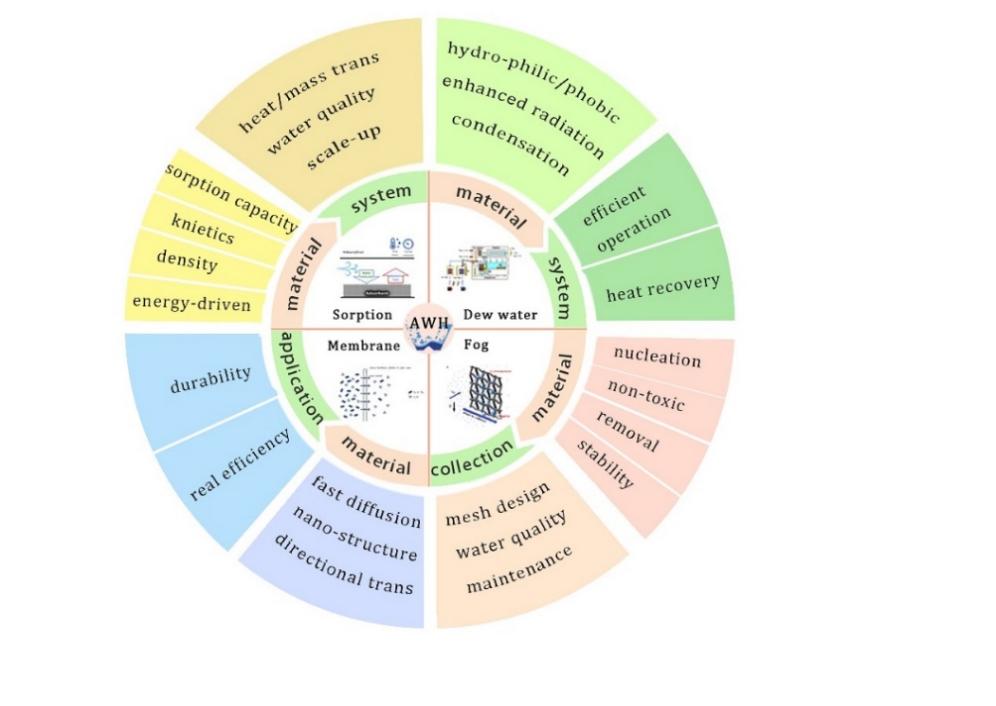Jiayun Wang, an assistant professor of our school, published "Atmospheric water harvesting Technology: Key Indicators and Challenges" in Energy & Environmental Science (IF:39.7), a top journal on energy and environment. This paper reviews the challenges and obstacles existing in the current air water extraction technology, summarizes the key indicators of technological innovation, and provides suggestions for the future scientific development path in this field. Jiayun Wang is the first author of the paper, and the University of Shanghai for Science and Technology is the first unit of the paper. The research was conducted in collaboration with Professor Ruzhu Wang and his team at Shanghai Jiao Tong University and supported by the National Natural Science Foundation of China (52006145), Shanghai Morning Light Program (19CG54) and Shanghai Young Talents Program (20YF1431500).
This paper focuses on the emerging technology of air water extraction to obtain fresh water directly from the atmosphere, and is committed to solving the global freshwater shortage crisis. Air water intake mainly includes four ways: condensation, adsorption, membrane separation and fog collection. It is an effective scheme of distributed flexible water supply and has great application potential. This paper summarizes the challenges and obstacles in the field of air water intake. A comprehensive air water intake performance evaluation system was established. It also calls for interdisciplinary integration of materials science, thermodynamics, meteorology, engineering and other disciplines to work together to promote technological innovation.
This paper proposes that the research of air water intake should be based on the systematic research route of "advanced materials - heat and mass transfer optimization - efficient coupled operation of the system", analyzes the principle and work flow of different water intake technologies, and summarizes their future research focus. The purpose of this work is to build a bridge between the academic and application of air water intake, establish a unified evaluation consensus in the field, which has important guiding significance for the development of efficient, sustainable and large-scale water intake technology in the future, and provide a helping hand for the eventual large-scale application and promotion of distributed air water intake technology.

Future research priorities for efficient AWHs technology applications
Since joining the University of Shanghai for Science and Technology in 2019, Jiayun Wang has made continuous 0-1 scientific exploration in the fields of development and utilization of gels and porous carbon materials, heat and moisture transfer mechanism and optimization, thermodynamic system optimization and other fields, based on the frontier interdisciplinary subject of air water intake. Since joining the company, Jiayun Wang has been adhering to the academic beginner's mind of "doing first-class knowledge" and "standing firm in the sky". She has been rooted in the refrigeration innovation team led by Professor Zhang Hua and constantly practicing the vow of "integrating scientific research into industrial development". She has published articles in Energy & Environmental Science (IF=39.7), Joule (IF=46.2), Nature communication, IF=17.7), Cell reports physical science and STAR protocols have published high-level academic papers, and their research results have been cited many times by top international journals such as Nature, Joule and Energy and Environmental Sciences.
Introduction to the Journal: Energy & Environmental Science, sponsored by the Royal Society of Chemistry (RSC) Press, enjoys a high reputation in the world. It is recognized by RSC as the world's top journal in the field of energy and environmental science, ranking the first among more than 400 journals in the field of energy and environmental science. The latest impact factor for 2022 was 39.714.
The paper link: https://doi.org/10.1039/D2EE03079A

